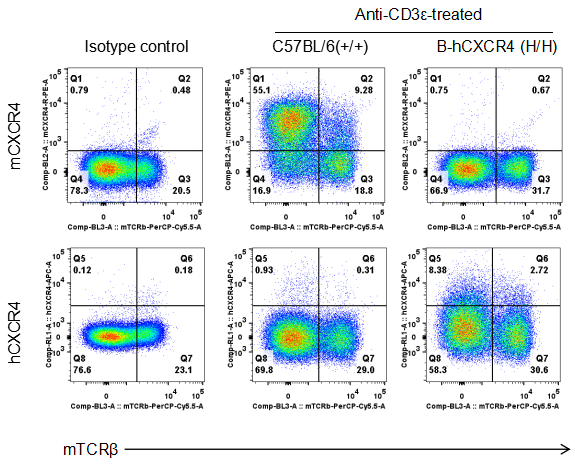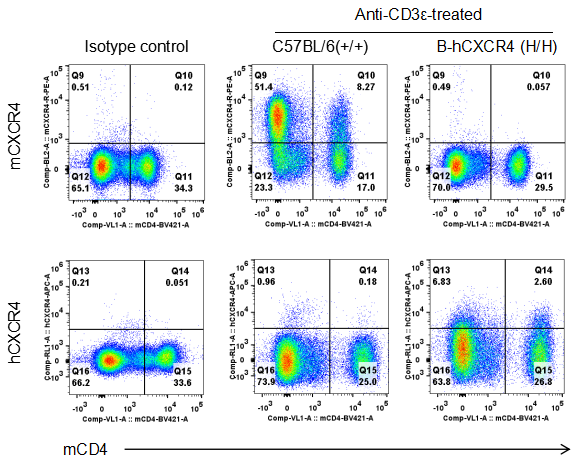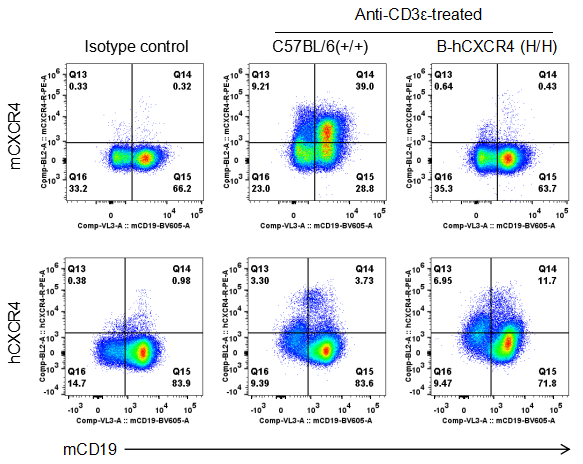Targeting strategy
Gene targeting strategy for B-hCXCR4 mice. The exons 1~2 of mouse Cxcr4 gene that encode the full-length protein were replaced by human CXCR4 exons 1~2 in B-hCXCR4 mice.
mRNA expression analysis
Strain specific analysis of CXCR4 gene expression in WT and B-hCXCR4 mice by RT-PCR. Mouse Cxcr4 mRNA was detectable in splenocytes and thymocytes of wild-type (+/+). Human CXCR4 mRNA was detectable only in H/H, but not in +/+ mice.
Protein expression analysis in T cells
Strain specific CXCR4 expression analysis in homozygous B-hCXCR4 mice by flow cytometry. Splenocytes were collected from WT and homozygous B-hCXCR4 (H/H) mice stimulated with anti-CD3ε in vivo, and analyzed by flow cytometry with species-specific CXCR4 antibody. Mouse CXCR4 was detectable in WT mice. Human CXCR4 was exclusively detectable in homozygous B-hCXCR4, but the expression level was significantly lower than mouse CXCR4 in the C57BL/6 mice.
Protein expression analysis in CD4+ T cells
Strain specific CXCR4 expression analysis in homozygous B-hCXCR4 mice by flow cytometry. Splenocytes were collected from WT and homozygous B-hCXCR4 (H/H) mice stimulated with anti-CD3ε in vivo, and analyzed by flow cytometry with species-specific CXCR4 antibody. Mouse CXCR4 was detectable in WT mice. Human CXCR4 was exclusively detectable in homozygous B-hCXCR4, but the expression level was significantly lower than mouse CXCR4 in the C57BL/6 mice.
Protein expression analysis in B cells
Strain specific CXCR4 expression analysis in homozygous B-hCXCR4 mice by flow cytometry. Splenocytes were collected from WT and homozygous B-hCXCR4 (H/H) mice stimulated with anti-CD3ε in vivo, and analyzed by flow cytometry with species-specific CXCR4 antibody. Mouse CXCR4 was detectable in WT mice. Human CXCR4 was exclusively detectable in homozygous B-hCXCR4, but the expression level was significantly lower than mouse CXCR4 in the C57BL/6 mice.






